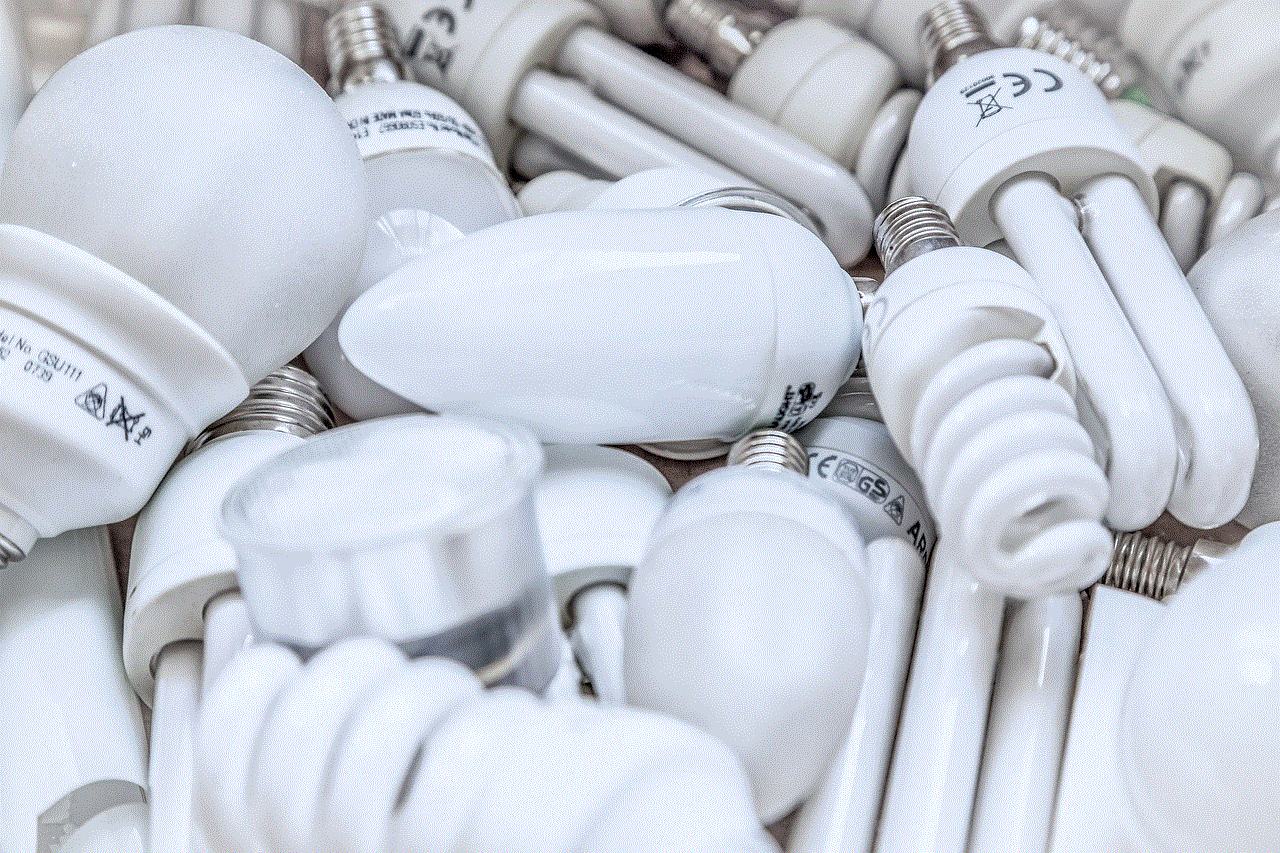delete yellow app account
Title: Deleting Your Yellow App Account: A Step-by-Step Guide to Ensuring Your Data Privacy
Introduction:
In this digital age, privacy and data protection have become paramount concerns for users of various online platforms. Whether it’s social media, e-commerce, or utility apps, it is essential to have control over our personal information. One such platform that has gained popularity is the Yellow App, a social networking platform primarily targeted towards teenagers. However, if you are considering deleting your Yellow App account, this comprehensive guide will walk you through the process step-by-step, ensuring your data privacy.
Paragraph 1: Understanding the Yellow App
The Yellow App, often referred to as “Tinder for Teens,” is a social networking platform designed to help teenagers make new friends. It allows users to connect with others in their local area and engage in conversations, share pictures, and even participate in video chats. While the app aims to provide a fun and interactive experience, concerns about privacy and data security have arisen, prompting some users to delete their accounts.
Paragraph 2: The Importance of Data Privacy
Data privacy has become a significant concern in recent years, with numerous reports of data breaches and misuse of personal information. It is crucial to understand the risks associated with sharing personal data online and the importance of exercising control over the information we provide to these platforms. Deleting your Yellow App account is a proactive step towards protecting your data privacy.
Paragraph 3: Assessing Your Account Activity
Before proceeding with deleting your Yellow App account, it is essential to assess your account activity. Take some time to review the conversations, pictures, or any other content you may have shared on the platform. Consider whether there is any sensitive or personal information that you would like to remove or save before deleting your account.
Paragraph 4: Backing Up Your Data
To ensure you don’t lose any valuable conversations, pictures, or memories, it is advisable to back up your data before deleting your Yellow App account. You can take screenshots of important conversations or use third-party apps to download and save pictures. Remember to exercise caution and maintain privacy while storing these backups.
Paragraph 5: Deleting Your Yellow App Account
To delete your Yellow App account, follow these steps:
1. Open the Yellow App on your device.
2. Navigate to your profile settings.
3. Look for the account deletion option.
4. Follow the on-screen instructions to confirm the deletion.
5. If prompted, provide a reason for deleting your account.
6. Confirm the deletion request.
Paragraph 6: Understanding the Implications of Deleting Your Account
Deleting your Yellow App account has several implications worth considering. Firstly, all your conversations, pictures, and data associated with your account will be permanently deleted. Additionally, you will no longer be able to access the app’s features, notifications, or any other content. Deleting your account also means that your profile will no longer be visible to other users.
Paragraph 7: Data Retention and Privacy Policies
While you may have deleted your Yellow App account, it is essential to understand the platform’s data retention and privacy policies. Some platforms retain user data for a specific period, even after account deletion. Familiarize yourself with the Yellow App’s policies to ensure your data is truly removed from their servers.
Paragraph 8: Revoking App Permissions
Deleting your Yellow App account is not the only step in ensuring your data privacy. It is crucial to revoke any permissions you may have granted to the app on your device. Go to your device settings and review the app permissions. Disable any unnecessary permissions that may still provide access to your personal data.
Paragraph 9: Securing Your Online Presence
Deleting your Yellow App account is just one aspect of securing your online presence. It is vital to reassess your privacy settings on other social media platforms, e-commerce accounts, and any other apps that may have access to your personal information. Regularly reviewing and updating your privacy settings is a proactive step towards maintaining data privacy.
Paragraph 10: Seeking Professional Advice
If you have concerns about the privacy and security of your personal information on the Yellow App or any other platform, consider seeking professional advice. Privacy experts, legal professionals, or cybersecurity specialists can provide valuable guidance tailored to your specific circumstances.
Conclusion:
Deleting your Yellow App account is a proactive step towards taking control of your personal data and ensuring your privacy. By following the steps outlined in this guide, you can confidently delete your account while safeguarding your conversations, pictures, and other personal information. Remember to familiarize yourself with privacy policies, revoke app permissions, and reassess your online presence to maintain data privacy in an ever-evolving digital landscape.
teens peer pressure girl
Title: Teens and Peer Pressure: The Impact on Girls
Introduction:
Peer pressure is a common phenomenon among teenagers, and it can have a significant impact on their lives. This article focuses on the specific topic of peer pressure on teenage girls. With the rapidly changing social dynamics and increasing influence of media, understanding the effects of peer pressure on girls becomes crucial for parents, educators, and society as a whole. This article will explore the various aspects of peer pressure faced by teenage girls, including its causes, signs, consequences, and ways to cope with it.
Paragraph 1: Understanding Peer Pressure
Peer pressure refers to the influence that one’s peers exert on an individual’s thoughts, behaviors, and choices. It can manifest in both positive and negative forms. Positive peer pressure encourages individuals to make healthy choices, engage in productive activities, and adopt positive behaviors. Negative peer pressure, on the other hand, leads individuals to make harmful choices, engage in risky behaviors, and succumb to negative influences.
Paragraph 2: Causes of Peer Pressure among Teenage Girls



Several factors contribute to the prevalence of peer pressure among teenage girls. First and foremost, adolescence is a stage of identity formation, during which individuals seek acceptance and validation from their peers. Girls, in particular, are often influenced by societal expectations regarding appearance, popularity, and social status. Additionally, the media’s portrayal of idealized beauty standards and social media’s influence on self-esteem further contribute to the pressure girls face.
Paragraph 3: Forms of Peer Pressure Faced by Teenage Girls
Peer pressure can manifest in various forms among teenage girls. One prominent form is appearance-based peer pressure, where girls feel compelled to conform to societal beauty standards. This may lead to unhealthy dieting, excessive exercise, or even the development of eating disorders. Another form is social pressure, where girls are influenced to engage in risky behaviors such as underage drinking, smoking, or drug abuse. Academic pressure, relationship pressure, and peer pressure to engage in sexual activities are also common among teenage girls.
Paragraph 4: Signs of Peer Pressure on Girls
Recognizing the signs of peer pressure is essential for parents, educators, and mentors to support teenage girls effectively. Some common signs include sudden changes in behavior, withdrawal from family and previous interests, a sharp decline in school performance, changes in appearance or clothing choices to fit in with a specific group, and engaging in risky behaviors.
Paragraph 5: Consequences of Peer Pressure on Girls
The consequences of succumbing to negative peer pressure can be detrimental to teenage girls’ overall well-being. Girls may experience a decline in self-esteem, increased anxiety, depression, and social isolation. Engaging in risky behaviors can lead to long-term health issues, academic struggles, strained relationships, and legal consequences. It is crucial to address the consequences promptly to prevent further harm.
Paragraph 6: Coping Strategies for Girls Dealing with Peer Pressure
Empowering girls with coping strategies is essential to help them navigate peer pressure successfully. Open communication with parents, teachers, and mentors is vital to provide a supportive environment where girls feel comfortable discussing their concerns. Teaching assertiveness skills, promoting self-confidence, and encouraging healthy decision-making are effective ways to help girls resist negative peer pressure. Additionally, fostering positive friendships and engaging in extracurricular activities can provide a sense of belonging and reduce the influence of negative peer pressure.
Paragraph 7: Role of Parents and Educators
Parents and educators play a significant role in mitigating the impact of peer pressure on teenage girls. By maintaining open lines of communication, actively listening to their concerns, and providing guidance, parents can create a safe space for girls to express themselves. Educators can introduce comprehensive programs that address peer pressure, self-esteem, and healthy decision-making to empower girls to make informed choices.
Paragraph 8: Media Literacy and its Importance
Given the pervasive influence of media on teenage girls, promoting media literacy is crucial. By teaching girls to critically analyze media messages, identify unrealistic beauty standards, and question the authenticity of social media portrayals, they can develop a healthier perspective on body image and self-worth. Media literacy programs can be integrated into schools and community initiatives to empower girls to resist negative influences.
Paragraph 9: Building a Supportive Community
Creating a supportive community is essential to combat peer pressure. Peer support groups, mentoring programs, and workshops focused on self-esteem and body positivity can provide girls with a sense of belonging and empowerment. By fostering an environment that celebrates individuality and respects diverse choices, girls can feel confident in resisting negative peer pressure.
Paragraph 10: Conclusion
Peer pressure is a significant challenge faced by teenage girls, impacting various aspects of their lives. By understanding the causes, signs, and consequences of peer pressure, we can better equip girls to navigate these challenges successfully. Through effective communication, empowerment, and fostering supportive communities, we can help teenage girls develop resilience and make positive choices, enabling them to thrive despite the pressures they face.
how to turn off private relay
Title: How to turn off Private Relay: A Comprehensive Guide
Introduction:
Private Relay is a new privacy feature introduced by Apple in iOS 15 and macOS Monterey. It allows users to browse the internet with enhanced privacy and security by encrypting internet traffic and hiding their IP address. However, there might be circumstances where you want to disable Private Relay temporarily or permanently. In this article, we will explore various methods to turn off Private Relay on both iOS and macOS devices, ensuring you have full control over your privacy settings.
1. Understanding Private Relay:
Before diving into disabling Private Relay, it’s important to have a basic understanding of what it does. Private Relay routes your internet traffic through two separate relays, making it difficult for anyone, including Apple, to track your activity or associate it with your IP address. It helps protect your privacy by encrypting your browsing data and preventing it from being linked to your online identity.



2. Disabling Private Relay on iOS:
To turn off Private Relay on your iOS device, follow these steps:
– Open the Settings app on your device.
– Scroll down and tap on “iCloud.”
– Next, tap on “Private Relay.”
– Toggle off the switch next to “Private Relay” to disable the feature.
3. Disabling Private Relay on macOS:
To disable Private Relay on your macOS device, follow these steps:
– Click on the Apple menu in the top-left corner of your screen.
– Select “System Preferences” from the drop-down menu.
– In the System Preferences window, click on “Apple ID.”
– Next, click on “Private Relay.”
– Uncheck the box next to “Private Relay” to disable the feature.
4. Understanding the Impact of Disabling Private Relay:
While it is possible to turn off Private Relay, it’s essential to consider the potential impact on your privacy and security. By disabling Private Relay, your internet traffic will no longer be encrypted or routed through Apple’s relays, increasing the risk of your data being intercepted or tracked by third parties.
5. Reasons to Disable Private Relay:
There are a few scenarios where you might want to turn off Private Relay, such as:
– Troubleshooting connectivity issues: If you’re experiencing difficulties accessing certain websites or services, temporarily disabling Private Relay can help identify if the feature is causing the problem.
– Accessing region-specific content: Private Relay can impact your ability to access region-locked content, so turning it off might be necessary to access specific services or websites available only in certain locations.
6. Temporarily Disabling Private Relay:
If you wish to disable Private Relay temporarily, follow the aforementioned steps to turn it off. You can then re-enable it once you have resolved the issue or accessed the desired content. This ensures you maintain the benefits of Private Relay while having the flexibility to disable it when needed.
7. Permanently Disabling Private Relay:
If you decide that Private Relay is not the right privacy feature for you, you can permanently disable it. However, keep in mind that doing so may compromise your online privacy and security. To permanently disable Private Relay, follow the steps mentioned earlier, but leave the feature turned off.
8. Alternatives to Private Relay:
If you disable Private Relay but still want to protect your online privacy, there are alternative methods you can consider:
– Use a VPN: Virtual Private Networks (VPNs) encrypt your internet traffic and hide your IP address, providing a similar level of privacy as Private Relay.
– Browser extensions: There are several browser extensions available that can block tracking scripts, cookies, and other online trackers, enhancing your privacy while browsing the web.



9. Conclusion:
Private Relay is a valuable privacy feature introduced by Apple, offering enhanced security and anonymity when browsing the internet. However, there might be instances where you need to disable it temporarily or permanently. By following the steps provided in this guide, you can easily turn off Private Relay on both iOS and macOS, ensuring you have full control over your privacy settings. Remember to consider the potential impact on your privacy and security before disabling Private Relay, and explore alternative methods to protect your online privacy if needed.